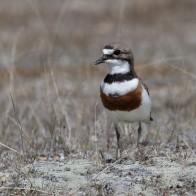About Us
The Trust
The Clutha Development (Clyde dam) Empowering Act 1982 provided the authority to construct the Clyde Dam and to form Lake Dunstan. A condition within the Act required the construction of a fish hatchery to assist with the maintenance of sports fish stocks within the new lake and within the river reach below the dam.
Otago Fish and Game Council promoted an alternative approach: to monitor the development of the recreational fishery after lakefill in order to properly assess whether fish stocks would need hatchery assistance, or whether they would be self-sustaining through natural spawning, rearing and recruitment from tributary waters
In order to satisfy the specific condition within the Act, it was agreed that a Trust Fund should be formed based on the funding which would have been required if the hatchery had been built and operated for the term of the consent. Negotiations by the affected parties resulted in the establishment of a trust, the development of a Trust Deed to guide the trust’s operations, and a settlement of $2,700,000. The ‘Electricorp Production Clutha Sports Fisheries Trust’ (Clutha Fisheries Trust) was formed in 1992 as a charitable trust in part settlement of the Electricity Corporation of New Zealand’s sports fisheries obligations under the Clutha Development (Clyde Dam) Empowering Act 1982. The Trust has recently changed its name to “Clutha Fisheries Trust” in order to reflect the corporate changes that have occurred since inception.
An initial five-year investigation into the development of the sports fishery concluded that a satisfactory and self-sustaining sports fishery has established in Lake Dunstan and that a fish hatchery is not necessary.
Having fulfilled this initial research requirement, the Trust Deed provides considerable flexibility to expand the Trust’s scope of work.

Did you know?
The banded dotterel is the most common small plover of New Zealand seashores, estuaries and riverbeds. Although their plumage varies seasonally, they are readily identified by their brown upperparts and complete or partial chestnut breast band, the latter being quite striking in breeding plumage.

